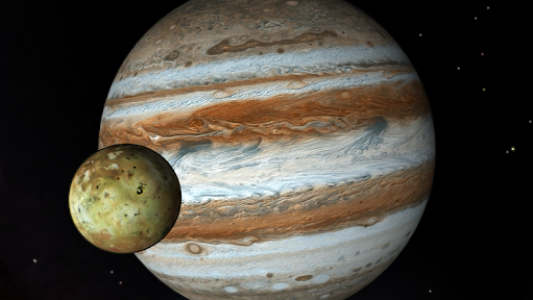

Planets are made when smaller chunks of rock smash together, building the full planet piece by piece over many millions of years. The heat inside planets is left over from when they were formed. The impact of the crash also let some of the heat that was trapped inside Uranus escape. Uranus still rolls around the Sun on its side today. Billions of years ago, something big crashed into Uranus with so much force that it tipped the planet over onto its side. The reason why Uranus is so cold is nothing to do with its distance from the Sun. The temperature on Neptune is still very cold, of course – usually around -214℃ – but Uranus beats that. Uranus holds the record for the coldest temperature ever measured in the Solar System: a very chilly -224℃.

However, the coldest planet is not Neptune, but Uranus – even though Uranus is a billion miles closer to the Sun than Neptune. Neptune is an incredible three billion miles away from the Sun.

You might think, then, that the coldest planet in the Solar System would be Neptune, as it is the furthest away from the Sun’s warmth. Here on Earth, we are about 100 million miles away from the Sun – a distance that provides the perfect temperature for life. The planets in our Solar System are heated by the Sun. We cultivate excellence, deliver value, enhance education, and engage the public.What is the coldest planet in the Solar System? – Sejal, aged seven, Bangalore, India The National Science Foundation (NSF) is an independent federal agency created by Congress in 1950 "to promote the progress of science to advance the national health, prosperity, and welfare to secure the national defense."ĪUI collaborates with the scientific community and research sponsors to plan, build, and operate cutting-edge facilities. NRAO also provides both formal and informal programs in education and public outreach for teachers, students, the general public, and the media. Observing time on NRAO telescopes is available on a competitive basis to qualified scientists after evaluation of research proposals on the basis of scientific merit, the capability of the instruments to do the work, and the availability of the telescope during the requested time. NRAO telescopes are open to all astronomers regardless of institutional or national affiliation. Operated under cooperative agreement by Associated Universities, Inc.įounded in 1956, the NRAO provides state-of-the-art radio telescope facilities for use by the international scientific community. The National Radio Astronomy Observatory is a facility of the National Science Foundation These oddities are thought to be caused by events, such as collisions, which occurred during the formation of the solar system. on its side), while Venus rotates about its axis in a clockwise direction. Uranus rotates about an axis that is nearly parallel with its orbital plane (i.e. Note, though, that there are two oddballs in our solar system that do not rotate in the same way as the rest of the planets. We could easily have found ourselves living in a solar system which was rotating clockwise about our Sun, if that was the initial state of rotation of the gas and dust cloud from which our solar system formed. There is nothing special about a counter-clockwise rotation, though. That rotation just happened to be in a counter-clockwise direction. As this gas and dust cloud began to collapse it also began to rotate. This is due to the initial conditions in the cloud of gas and dust from which our solar system formed. Question: The planets in our solar system are orbiting the Sun counter clockwise, why? Do the laws of physics dictate that all planet orbit their respective stars counter clockwise or is it possible to have a solar system where the planets are in a clockwise motion around their star? - DavidĪnswer: Most of the objects in our solar system, including the Sun, planets, and asteroids, all rotate counter-clockwise.


 0 kommentar(er)
0 kommentar(er)
